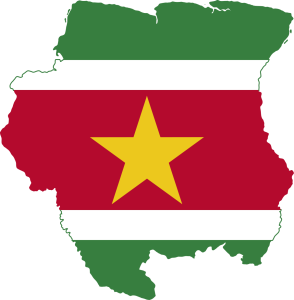Everything You Need To Know For Suriname
Geographical Position And Climate Of Suriname
Suriname is situated on the northeastern Atlantic coast of South America. It is bordered by the Atlantic Ocean to the north, French Guiana to the east, Brazil to the south, and Guyana to the west. The country’s terrain is predominantly covered by tropical rainforest, with a range of hills in the south. The northern coastal region, where most of the population is concentrated, consists of plains with fertile soil well-suited for agriculture. Suriname has a tropical climate characterized by high humidity and temperatures that remain relatively constant throughout the year.
Brief History Of Suriname
The earliest inhabitants of Suriname were the Amerindians, including groups such as the Arawak and Carib peoples.
In the 16th century, European explorers arrived on the shores of Suriname. The English established the first settlement at Marshall’s Creek along the Suriname River in the early 17th century. However, it was the Dutch who came to dominate the region, with the establishment of Dutch Guiana.
Suriname became a Dutch plantation colony in the 17th century, relying heavily on African slaves for labor in its sugar plantations. Slavery was abolished in 1863, but it wasn’t until ten years later that the slaves were fully released. In their place, indentured laborers from India, Indonesia, and China were brought in.
During World War II, Suriname was of strategic importance due to its resources of bauxite. Post-war, the demand for independence grew stronger. It was finally granted autonomy in 1954 and full independence from the Netherlands on November 25, 1975.
The young nation faced immediate internal strife and political instability. A military coup in 1980 led by Dési Bouterse overthrew the government, which led to a period of authoritarian rule and civil unrest, including the internal conflict known as the Surinamese Interior War.
In recent years, Suriname has been working towards political stability and economic development, capitalizing on its rich natural resources and cultural diversity. While challenges remain, the nation continues to be a unique blend of various cultures, traditions, and histories within South America.
Religion
The most practiced religion in Suriname is Christianity, followed by Hinduism and Islam.
Language
Dutch is an official language. Other languages spoken in the country are English, Chinese, French and Spanish.

Discover the vibrant culture, rich history, and lush landscapes of Suriname, a hidden gem in South America. Whether you’re an adventure seeker, a nature lover, or a cultural enthusiast, there’s something for everyone in this diverse and welcoming country.
Places You Must Visit In Suriname
Before You Visit Suriname
Travel to Suriname
Travelers can get to the country primarily by air, with the main international airport being Johan Adolf Pengel International Airport, located approximately 45 kilometers south of Paramaribo, the capital city. There are direct flights from several countries in the Caribbean, as well as from the Netherlands, which has historical ties with Suriname.
Overland entry is possible through border crossings from neighboring countries such as French Guiana and Guyana. The crossing from Brazil is more remote and less commonly used by tourists. These land routes typically involve river crossings and are serviced by ferries or small boats.
Once in Suriname, domestic travel can be done by bus or car within the more developed coastal areas. For reaching the interior regions, domestic flights are often necessary due to the dense rainforest and limited road infrastructure. River travel is also a common means of transportation for accessing remote areas.
Visas for Suriname
Visa requirements for Suriname vary depending on the traveler’s nationality. Many travelers, including those from the United States, Canada, and European Union countries, need a visa to enter Suriname.
Suriname offers different types of visas, such as tourist cards, e-visas, and visas on arrival, depending on the country of origin. The tourist card is available for citizens of certain countries and can be obtained at the airport or consulate. The e-visa system allows visitors to apply online before traveling.
It is important for all travelers to check the latest visa requirements with the nearest Surinamese diplomatic mission or their official government website before planning their trip, as visa policies can change. Visitors should also ensure their passport is valid for at least six months beyond the date of entry into Suriname.
Best time to visit
The best time to visit Suriname is during the dry seasons, which typically run from mid-August to November and from February to April. During these periods, the weather is more favorable for exploring the rainforests, wildlife spotting, and enjoying outdoor activities such as river trips and cultural tours.
The dry season also coincides with several festivals and events, providing an opportunity to experience Suriname’s diverse culture. However, even during the dry seasons, brief tropical showers are common, so it’s advisable to be prepared for rain at any time.
Visiting outside of the peak tourist times can offer a more tranquil experience, but travelers should be aware that the wet seasons (December to January and May to August) can bring heavy rains, making some areas less accessible due to flooding.
Important Information
Capital – Paramaribo
Territory – 163,820 km2
Currency – Surinamese dollar
Time Zone – UTC-3 (SRT)
Population – 632,638
Demonym – Surinamese
